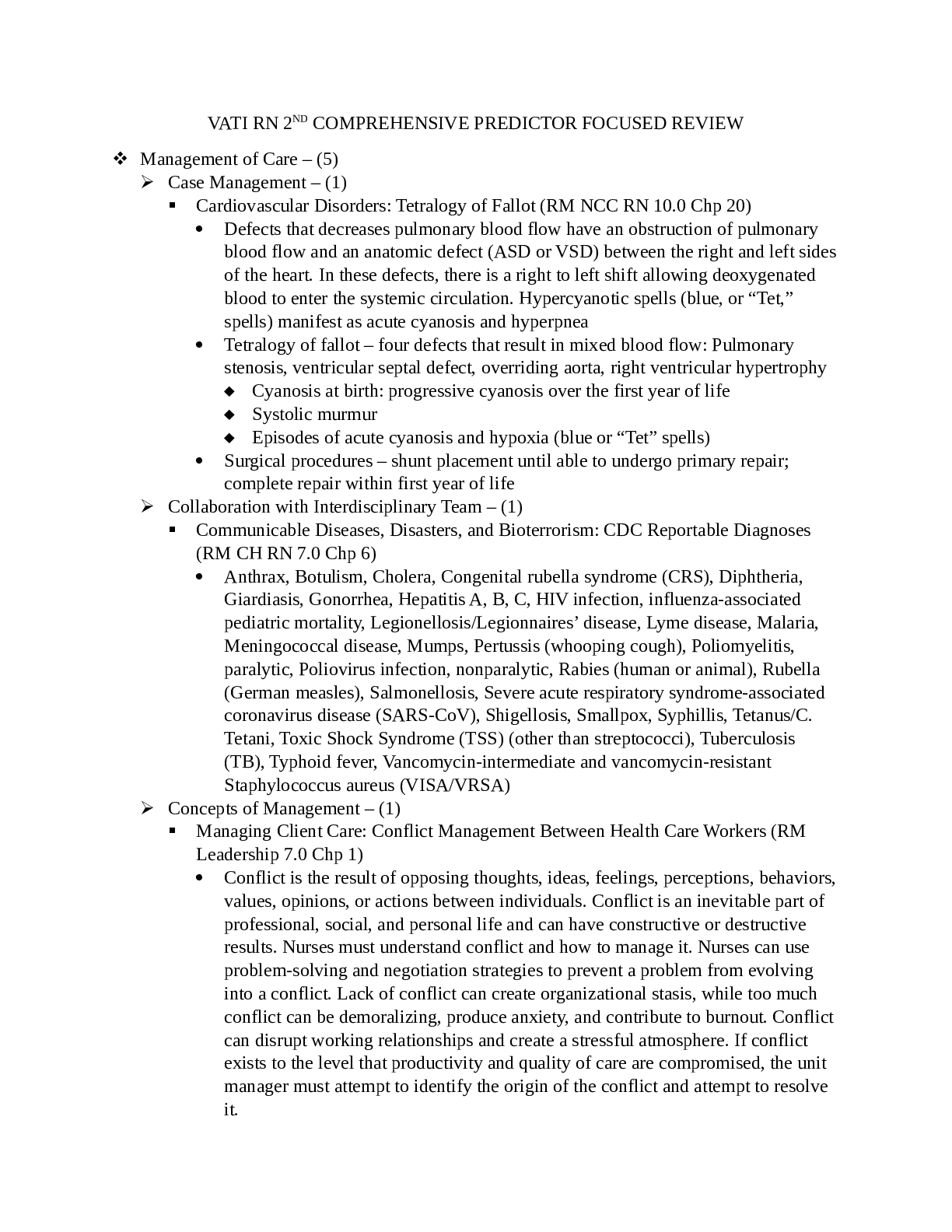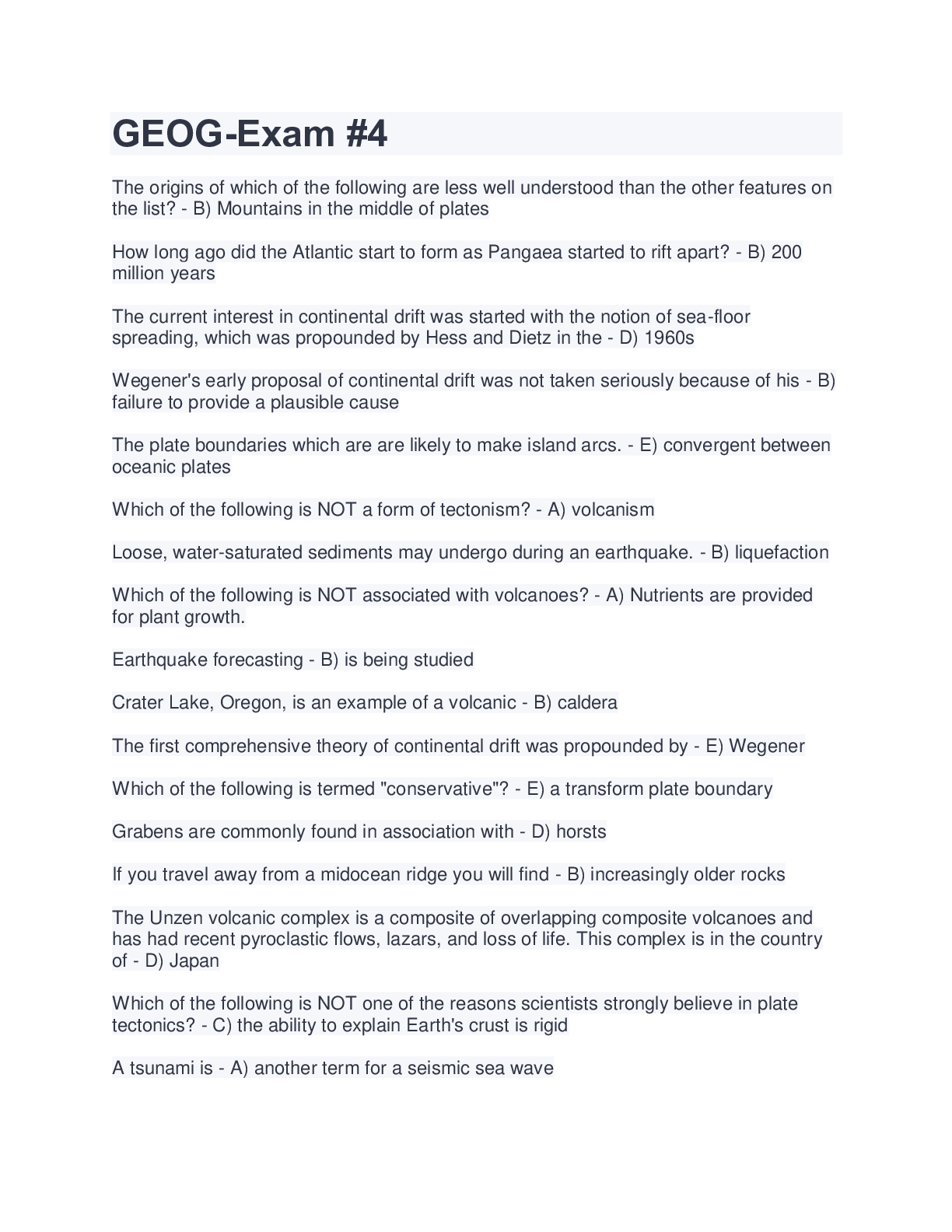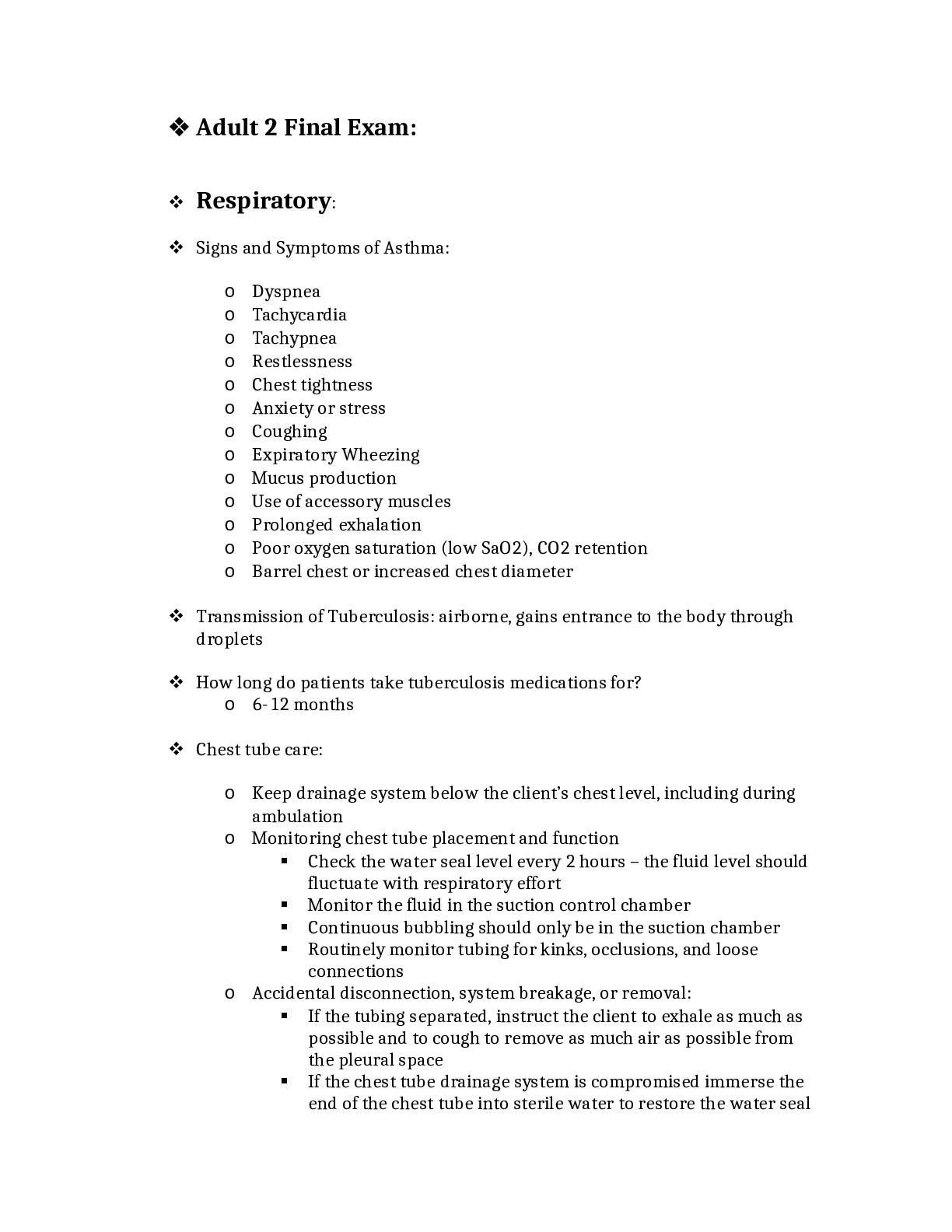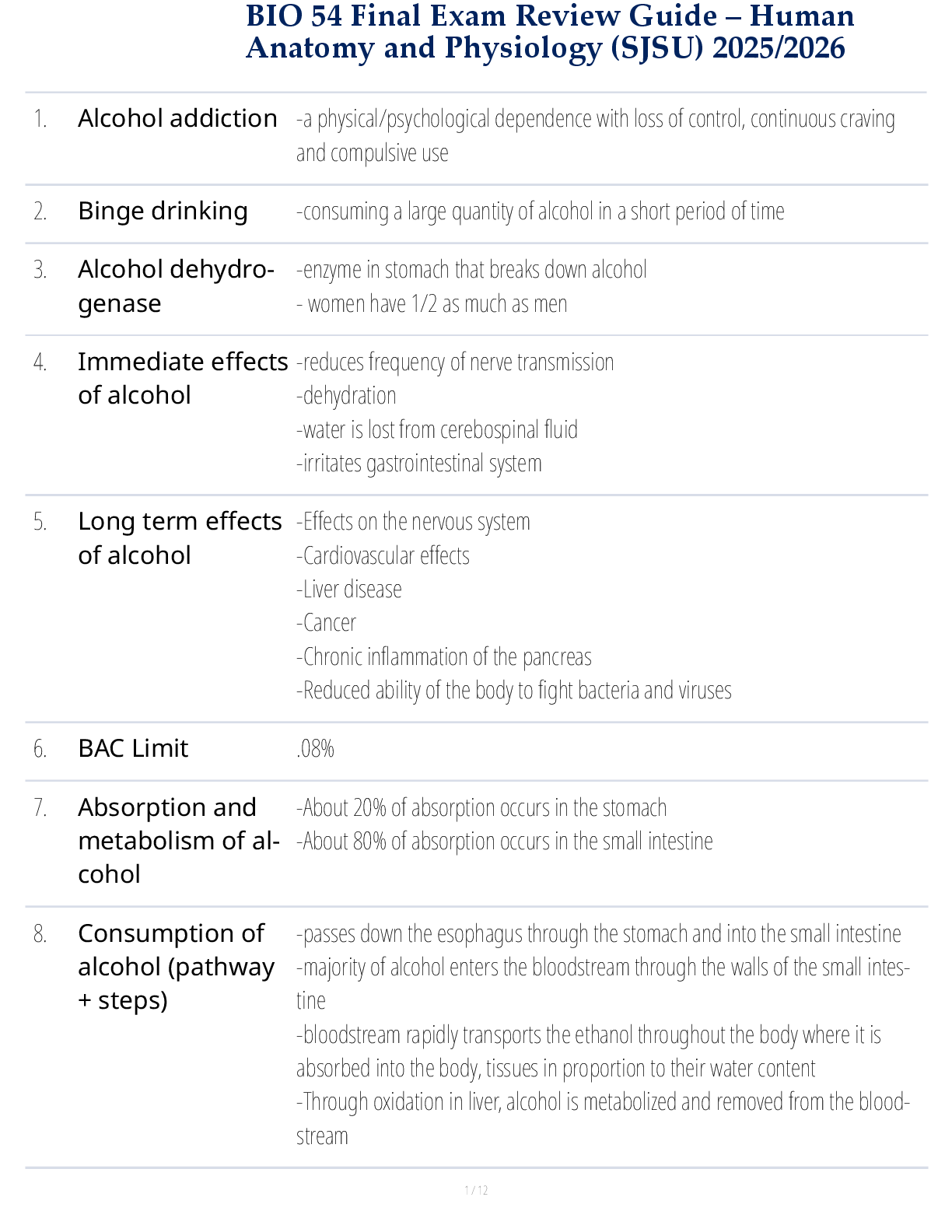*NURSING > STUDY GUIDE > WALDEN UNIVERSITY NURS 6501 Midterm Exam Review Guide (Cellular Processes and the Genetic Environmen (All)
WALDEN UNIVERSITY NURS 6501 Midterm Exam Review Guide (Cellular Processes and the Genetic Environment�)
Document Content and Description Below
WALDEN UNIVERSITY NURS 6501 Midterm Exam Review Guide (Cellular Processes and the Genetic Environment) • Describe cellular processes and alterations within cellular processes The eight special... ized cellular functions are movement, conductivity, metabolic absorption, secretion, excretion, respiration, reproduction, and communication. The chief functions of the nucleus are cell division and control of genetic information. Importantly, the ER is responsible for protein folding and sensing cell stress. Lysosomes are saclike structures that originate from the Golgi complex and contain digestive enzymes. These enzymes are responsible for digesting most cellular substances completely to their basic components, such as amino acids, fatty acids, and carbohydrates. A newly understood role of lysosomes is nutrient-dependent signal transduction. The signaling function cooperates with the known degradative role to mediate basic cell functions, such as nutrient sensing, metabolic adaptation, and quality control of proteins and organelles. 8. Four pathways of degradation in lysosomes include endocytosis, phagocytosis, macropinocytosis, and autophagy. . Mitochondria are found in great numbers in most cells and are responsible for cellular respiration and energy production. The enzymes of the respiratory chain (electrontransport chain), found in the inner membrane of the mitochondria, generate most of the cell’s ATP. The chemical tasks of maintaining essential cellular functions are referred to as cellular metabolism. Anabolism is the energy-using process of metabolism, whereas catabolism is the energy-releasing process. 2. ATP functions as an energy-transferring molecule. Energy is stored by molecules of carbohydrate, lipid, and protein, which, when catabolized, transfer energy to ATP. 3. Oxidative phosphorylation occurs in the mitochondria and is the mechanism by which the energy produced from carbohydrates, fats, and proteins is transferred to ATP. [Show More]
Last updated: 2 years ago
Preview 1 out of 54 pages

Buy this document to get the full access instantly
Instant Download Access after purchase
Buy NowInstant download
We Accept:

Reviews( 0 )
$15.00
Can't find what you want? Try our AI powered Search
Document information
Connected school, study & course
About the document
Uploaded On
Sep 21, 2021
Number of pages
54
Written in
Additional information
This document has been written for:
Uploaded
Sep 21, 2021
Downloads
0
Views
82











.png)










